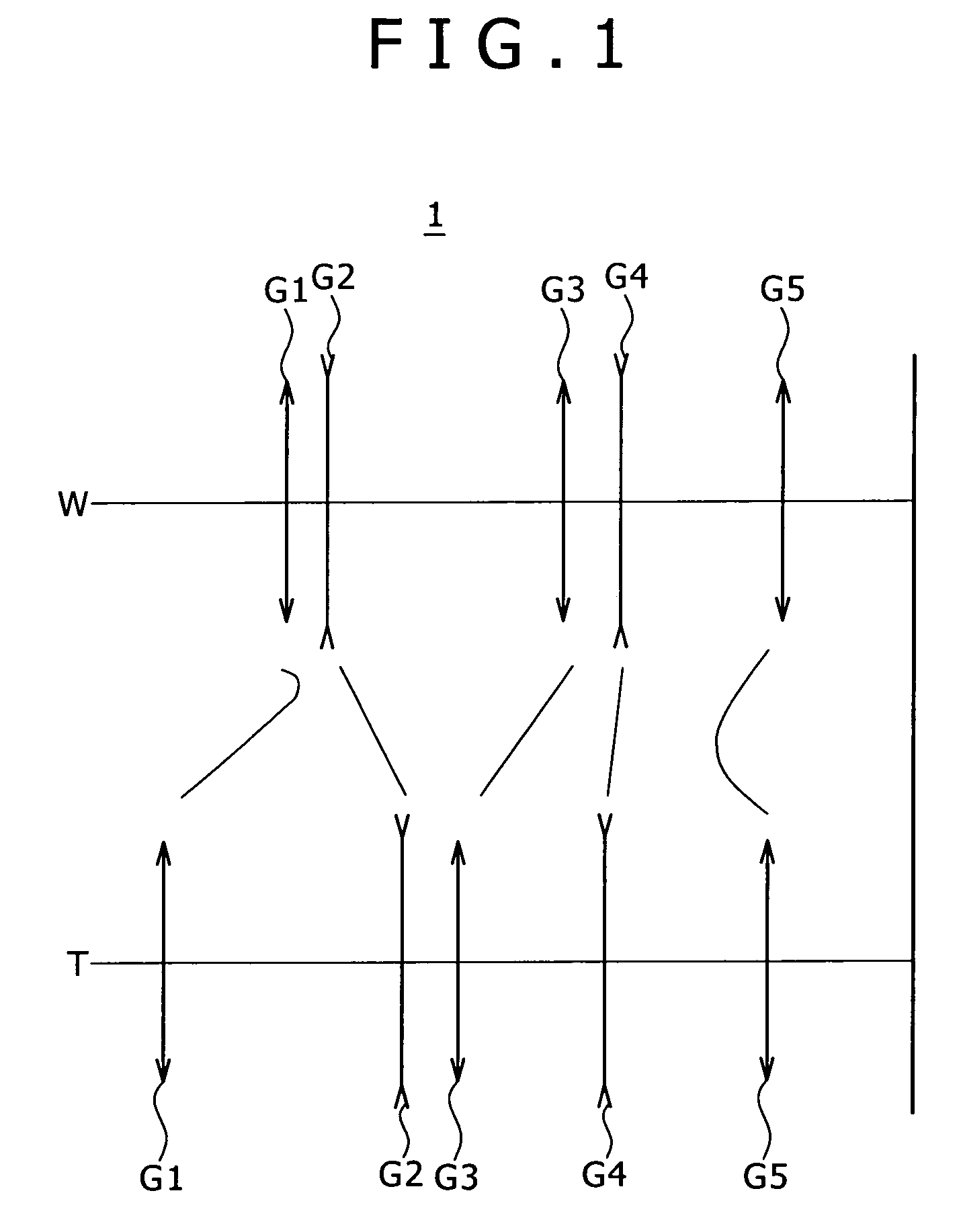Variable focal length lens system and image pickup device
- Summary
- Abstract
- Description
- Claims
- Application Information
AI Technical Summary
Benefits of technology
Problems solved by technology
Method used
Image
Examples
first embodiment
First Numerical Example
[0200]FIG. 2 shows a variable focal length lens system 11 in a first numerical example, the variable focal length lens system 11 being formed by, in order from an object side, a first lens group G1 having positive refractive power, a second lens group G2 having negative refractive power, a third lens group G3 having positive refractive power, a fourth lens group G4 having negative refractive power, and a fifth lens group G5 having positive refractive power.
[0201]In this variable focal length lens system 11, the first lens group G1 is formed by a cemented lens L11 of a negative lens of a meniscus shape having a convex surface facing the object side and a positive lens having a convex surface facing the object side, a positive lens L12 of a meniscus shape having a convex surface facing the object side, and a positive lens L13 of a meniscus shape having a convex surface facing the object side.
[0202]The second lens group G2 is formed by a negative lens L21 having ...
second embodiment
Second Numerical Example
[0218]FIG. 8 shows a variable focal length lens system 12 in a second numerical example, the variable focal length lens system 12 being formed by, in order from an object side, a first lens group G1 having positive refractive power, a second lens group G2 having negative refractive power, a third lens group G3 having positive refractive power, a fourth lens group G4 having negative refractive power, and a fifth lens group G5 having positive refractive power.
[0219]In this variable focal length lens system 12, the first lens group G1 is formed by a cemented lens L11 of a negative lens of a meniscus shape having a convex surface facing the object side and a positive lens having a convex surface facing the object side, a positive lens L12 of a meniscus shape having a convex surface facing the object side, and a positive lens L13 of a meniscus shape having a convex surface facing the object side.
[0220]The second lens group G2 is formed by a negative lens L21 havin...
third embodiment
Third Numerical Example
[0236]FIG. 14 shows a variable focal length lens system 13 in a third numerical example, the variable focal length lens system 13 being formed by, in order from an object side, a first lens group G1 having positive refractive power, a second lens group G2 having negative refractive power, a third lens group G3 having positive refractive power, a fourth lens group G4 having negative refractive power, and a fifth lens group G5 having positive refractive power.
[0237]In this variable focal length lens system 13, the first lens group G1 is formed by a cemented lens L11 of a negative lens of a meniscus shape having a convex surface facing the object side and a positive lens having a convex surface facing the object side, a positive lens L12 of a meniscus shape having a convex surface facing the object side, and a positive lens L13 of a meniscus shape having a convex surface facing the object side.
[0238]The second lens group G2 is formed by a negative lens L21 having...
PUM
 Login to View More
Login to View More Abstract
Description
Claims
Application Information
 Login to View More
Login to View More - R&D
- Intellectual Property
- Life Sciences
- Materials
- Tech Scout
- Unparalleled Data Quality
- Higher Quality Content
- 60% Fewer Hallucinations
Browse by: Latest US Patents, China's latest patents, Technical Efficacy Thesaurus, Application Domain, Technology Topic, Popular Technical Reports.
© 2025 PatSnap. All rights reserved.Legal|Privacy policy|Modern Slavery Act Transparency Statement|Sitemap|About US| Contact US: help@patsnap.com



